
Engagement Isn’t The Goal
While “engagement” is fun, it shouldn’t be our main goal.

Beyond Identifying a Story’s Problem and Solution
So your students can identify a story’s problem and solution. Then what?

Comparing Strengths and Weaknesses
Go beyond merely explaining strengths and weaknesses and get students thinking in interesting ways.

Fancy Product? Simple Thinking – Wax Museum
A big, impressive product doesn’t mean that there was big, impressive thinking.

Comparing Fraction Strategies
Comparing fraction strategies? Let’s take it even further!

Aim High, Scaffold Down in Math
A high level of thinking in math also requires the support of thoughtful scaffolding.

Categorize and Re-Categorize Countries
Put these countries into groups. Then do it again. Then… do it one more time. How does re-re-grouping the same places reveal new patterns and give new insights?

Looking Closely at Holiday Photos
Let’s write from multiple perspectives using an old timey holiday photo!

Categorize and Re-Categorize Animals
Put these animals into groups. Then do it again. Then… do it one more time. How does re-re-grouping the same creatures reveal new patterns and give new insights?

Holiday Writing: Packing Crates
Students will look closely at this old image and write a short, structured poem.

Special Gifts with Special Requirements
Your special friends sure have some unique gift needs!

Concept Attainment: Japan vs Jamaica
Is it an island or an archipelago?

Depth and Complexity: Patterns and Quadrilaterals
Why just “identifying patterns” isn’t deep enough.

From “Identify” to “Analyze” – Famous Structures
Rather than just learning about one structure, let’s climb Bloom’s and think more deeply.

Not Like The Others: US National Parks
Students will determine which US National Park is not like the others.

Thanksgiving Photo Writing
Starting with an old-timey photo, students will write from a particular item’s point of view.

Stories with the Same Problems and Solutions
Have you ever noticed that some stories have awfully similar problems? What if we looked for the most unusual way of solving a repeating problem?

Discussing An Important Decision from History
How would people with two different perspectives discuss a decision from history?

Famous Structures
Students explore famous structures from around the world, put them into related categories, pick some winners, and then design their own.

Why I Don’t Use “Create” in Bloom’s Taxonomy
The word “Create” can mask low-level tasks. Here’s why I avoid using it in objectives.

Concept Attainment: Conductors
Some of these examples are conductors and some are insulators!

Concept Attainment: Walnut vs Clouds
Let’s look at living vs non-living things.

Notice, Wonder: Critter
A mysterious image. Reveal it slowly. Let your students wonder!

Creativity Beyond The Fluff
Just because a task is “creative” doesn’t mean students are at the top of Bloom’s Taxonomy.

What’s the Pattern? Fraction Addition
Can your students figure out how to add fractions by looking for a pattern?
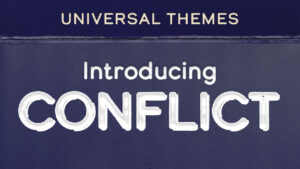
Introducing Universal Theme of Conflict
So what could you do with a Universal Theme of Conflict? Well, here’s an introduction that will get your students’ brains sweating.

Notice, Wonder: A House
A mysterious image. Reveal it slowly. Let your students wonder!

Models of Instruction: Inquiry Training
Want your students to ask better questions? Why not train them to inquire!?

Back to School: Rewriting The Beatles’ “Help!”
Can your students come up with a one-syllable word to sum up their time away from school? And then rewrite The Beatles’ song Help!?

Find The Pattern: Multiply Fractions
What if you set the stage for students to discover how to multiply fractions?

Investigating Population Changes
How have the ages of three countries’ populations changed from 1950 to 2020? And what problems might that create?

Concept Attainment: Hornet vs Tiger
Can your class spot the vertebrates vs invertebrates?

Analyze Suffixes: -ly, -less, and -ful
What exactly does adding -less do to a word?

Olympics: Medals by Population
Do big countries always have the most medals? Which smaller countries rank surprisingly high in the Olympics?

Olympics: Winter vs Summer Medal Count
Which country has a great balance between their summer and winter Olympic medals?

Chess Variant: Monster Chess
What if you had really weak chess pieces, but you could always move twice?

Introducing Universal Theme of Change
So what could you do with a Universal Theme of Change? Well, here’s an introduction that will get your students’ brains sweating.
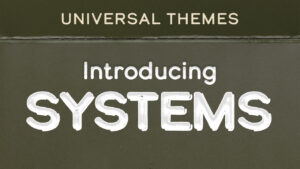
Introducing Universal Theme of Systems
So what could you do with a Universal Theme of Systems? Well, here’s an introduction that will get your students’ brains sweating.

Introducing Universal Theme of Power
So what could you do with a Universal Theme of Power? Well, here’s an introduction that will get your students’ brains sweating.
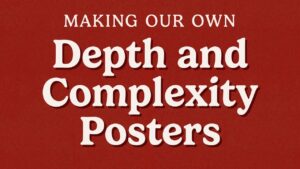
Making Depth and Complexity Posters
Why buy premade posters when you can show off your students’ thinking about Depth and Complexity?

Notice, Wonder: SLS Test
A mysterious image. Reveal it slowly. Let your students wonder!

Writing Concept Attainment Lessons
In a Concept Attainment lesson, we give students examples and non-examples of a concept — without telling them what that concept is!

Writing About Art: Burning of the Houses of Lords and Commons
Students will create a pretty darn interesting poem about Burning of the Houses of Lords and Commons.

Not Like The Others: Types of Diseases
Students will determine which of these types of diseases is not like the others.

Not Like The Others: Birds of the Desert
Students will determine which desert bird is not like the others.

Not Like The Others: Penguins
Students will determine which type of penguin is not like the others.

Not Like The Others: Microstates of Europe
Students will determine which of these tiny countries is not like the others.

Racetrack – Race Around A Graph
How fast do you get your mathematical car going without crashing?

Writing About Art: Impression, Sunrise
Students will create a surprisingly good poem based on Monet’s Impression, Sunrise.

Mow A Lawn
How long would it take to mow a very large lawn with a push-mower?

Not Like The Others: Microorganisms
Students will determine which of these microorganisms is not like the others.

An Introduction to Models of Instruction
As a new teacher, I only knew one model of instruction: Direct Instruction. I was like a chef who only knew how to deep fry!

Notice, Wonder: Butterball
A mysterious image. Reveal it slowly. Let your students wonder!

Notice, Wonder: Ramses
A mysterious image. Reveal it slowly. Let your students wonder!

Automobiles – Mixed Up Paragraph
Can you use the context clues to get these sentences about automobiles back into the correct order?

Washington, DC – Mixed Up Paragraph
Can you use the context clues to get these sentences about Washington, DC back into the correct order?

Trains – Mixed Up Paragraph
Can you use the context clues to get these sentences about trains back into the correct order?

Earthquakes – Mixed Up Paragraph
Can you use the context clues to get these sentences about earthquakes back into the correct order?

Words Within Words: AIRPLANE
How many words can you find within airplane?

Words Within Words: LEOPARD
How many words can you find within “leopard”?

Words Within Words: SATURN
How many words can you find within Saturn?

Drawing An Impossible Triangle
Here’s how you can draw The Penrose Triangle, an example of an impossible shape.

Plant Adaptation Tournament
Who will win in a tournament of eight plants with Interesting adaptations!?

Notice, Wonder: Craters
A mysterious image. Reveal it slowly. Let your students wonder!

Notice, Wonder: Bloom
A mysterious image. Reveal it slowly. Let your students wonder!

Fizz Buzz: A Counting and Divisibility Game
Ready for a tricky counting and divisibility game?

Depth and Complexity Walkthroughs
You’re implementing Depth and Complexity, but how do you know if you’re doing it well? Five things to look for.

Notice, Wonder: Skylight
A mysterious image. Reveal it slowly. Let your students wonder!
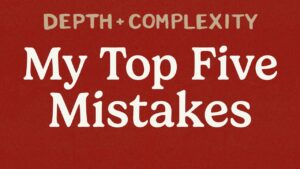
My Top 5 Depth and Complexity Mistakes
I spent about a decade making some pretty major mistakes in my use of depth and complexity.

Microchess (Chess Variant)
What if we played chess on a board that’s only 4×5?

Charge of the Light Brigade – Chess Variant
What if one side played with THREE QUEENS and the other had SEVEN KNIGHTS!? What if?

Horde Chess Variant
What if one player had, say, 32 pawns?

Drawing Knots, Level 3
How to draw the final version of the twisty Henri Matisse knot!

Drawing Knots, Level 2
How to draw a more complex version of this twisty Henri Matisse knot!

Drawing Knots, Level 1
How to draw a simple version of this twisty Henri Matisse knot!

Tournament: 8 Wonders of the Solar System
Which location is the most wondrous place in the solar system?

Notice, Wonder: Krzywy Las
A mysterious image. Reveal it slowly. Let your students wonder!

Not Like The Others: Ants of the World!
Students will determine which type of ant is not like the others.

Notice, Wonder: Scales
A mysterious image. Reveal it slowly. Let your students wonder!

Sets of Idioms Related to Numbers
Two sets of idioms related to numbers.

Notice, Wonder: Vortices
A mysterious image. Reveal it slowly. Let your students wonder!

The 8th Wonder of the World Tournament
Which of these eight wonders deserves to become the Eighth Wonder of the World!?

Notice, Wonder: Swirls
A mysterious image. Reveal it slowly. Let your students wonder!

Notice, Wonder: Witch’s Fingers
A mysterious image. Reveal it slowly. Let your students wonder!

Five Sets of Bird and Bug Idioms
Five sets of idioms related to birds (and bugs).

Word Pyramid: P to PLAINS
Add a letter at each step to form a new word. Can you connect the starting point and ending point?

Word Pyramid: T to PLANET
Add a letter at each step to form a new word. Can you connect T and PLANET?

Word Pyramid: O to Stones
Add a letter at each step to form a new word. Can you connect the starting point and ending point?

Word Pyramid: I to LIONS
Add a letter at each step to form a new word. Can you connect the starting point and ending point?

Sets of Idioms Related to Body Parts
Five sets of five idioms, all related to body parts!

Sets of Idioms Related to Food
Five sets of five idioms, all related to food.

Exploration Technology Tournament
Which of these pieces of exploration technology is most important? Most underrated? Most long-lasting?

Word Pyramid: T to Patch
Add a letter at each step to form a new word. Can you connect the starting point and ending point?

Word Pyramid: H to CRASH
Add a letter at each step to form a new word. Can you connect the starting point and ending point?

Rethinking Extension Menus
Is creating nine, two-sentence tasks really an effective way to differentiate?

Greek and Latin Word Part Paths
How can we go from Biology to Immobile?

Precipitation Tournament
Eight types of precipitation battle it out in this tournament.

Parabolic Curve Art
Create mathematical art with curves that, well, aren’t curvy.

Tournament of Ancient Inventions
Which of these inventions of the ancient world is most influential? Least useful today? Most taken-for-granted?

Animal Adaptation Tournament
Which animal has the most interesting, most valuable, or strangest adaptations?

Habitable Planets and Moons Tournament
Which object in the solar system is most habitable?

Parts of Speech Tournament
Which part of speech is most useful? Interesting? Strange?

Building Creative Confidence with the Torrance Tests
Here are a bunch of ways to quickly practice creativity with your students for zero dollars.

How Many Ways: Fraction Subtraction 234
How many different ways can you make this fraction subtraction statement true using only the digits one through nine?

How Many Ways: Fraction Addition 234
How many different ways can you make this fraction addition statement true using only the digits one through nine?

How Many Ways: Fractions Divide Equals 2/3
How many different ways can you make this fraction division statement true using only the digits one through nine?

How Many Ways: Fractions Multiply 2/3
How many different ways can you make this fraction multiplication statement true using only the digits one through nine?

How Many Ways: Divide Fractions Equal 1/4
How many different ways can you make this fraction division math statement true using only the digits one through nine?

How Many Ways: Multiply Fractions Equal 1/4
How many different ways can you make this fraction multiplication statement true using only the digits one through nine?

How Many Ways: Fraction Subtraction Equals 1/2
How many different ways can you make this math statement true using only the digits one through nine?

Writing in Pilish
Pi can go beyond circles! What if you wrote using the digits of pi as your guide?

Writing About Art: Chōshi in Shimosha
Get your students writing some pretty darn impressive poetry based on Japan’s most famous artist.

Not Like The Others: Types of Volcanoes
Which of these types of volcanoes is not like the others?

Writing About Art: Wanderer Above the Sea of Fog
Students will look closely at a piece of art and then write a structured poem about it.

Not Like The Others: Types of Rocks
Which of these rocks is not like the others?

Brain Needs or Heart Needs
We think of gifted kids as only having academic needs, but – in their own words – they also have many needs of the heart.

Not Like The Others: Snakes of the Rainforest
Students will determine which snake of the rainforest is not like the others.

Writing About Art: Twilight in the Wilderness
Students will write about a beautiful painting from Frederic Edwin Church.

Not Like The Others: Deserts
Which of these deserts is not like the others?

Not Like The Others: Rainforests
Which of these rainforests is not like the others?

Not Like The Others: Stars
How is each of these stars not like the others?

Not Like The Others: US States
How is each of these states not like the others?

Explain Concepts with the Frayer Model
Giving a definition just doesn’t cut it! Use the Frayer Model to explain (and assess!) vocabulary.

Not Like The Others: Mountains
Which of these mountains is not like the others?
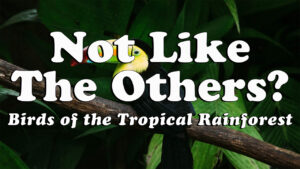
Not Like The Others: Birds of the Tropical Rainforest
Which of these four birds is not like the others?

Not Like The Others: Branches of the US Government
How is each part of the United States Government not like the other parts?

New Uses for a Paperclip
So what are some new ways to use a paperclip?

Create A Civilization: Currency
What type of currency will your civilization use? What symbols will be on it? Why are they significant?

Create A Civilization: Design A Flag
What makes for a good flag? What makes a bad flag?

Antonym Paths
Does the antonym of an antonym bring us back to the same meaning?

Tournament of Presidents
So who was the strangest of these eight presidents?

Fancier Figurative Language: Use the Opposite
Let’s start with “As cold as fire.”

Fancier Figurative Language: Move the Simile
What if we started a sentence with the simile?

Introduction to Differentiation
When differentiating, most teachers simply start in the wrong place!

Differentiation of the Environment
Lisa explains how Log Cabin Living changed her classroom environment. Sort of.

Unexpected Intensities
Do you know a student who’s a little bit… intense?

Think Like A Historian
Here’s how effects be causes and causes can be effects!

Building “Not Like The Others” Tasks
A delightfully ambiguous framework that is quick to prepare, but can last forever!

Anti-Checkers
Sure, anyone can win at checkers… but can you lose!?

Four Player Chess
Tired of boring ol’ chess? Then you need to try FOUR PLAYER chess!

Why “Challenging” May Not Be The Right Goal
So many of us say, “I want to challenge my students!” But, would you want a job that you describe as “challenging”?

Analyzing Conflict with the Content Imperatives
How to go deep into conflict using the Content Imperatives.